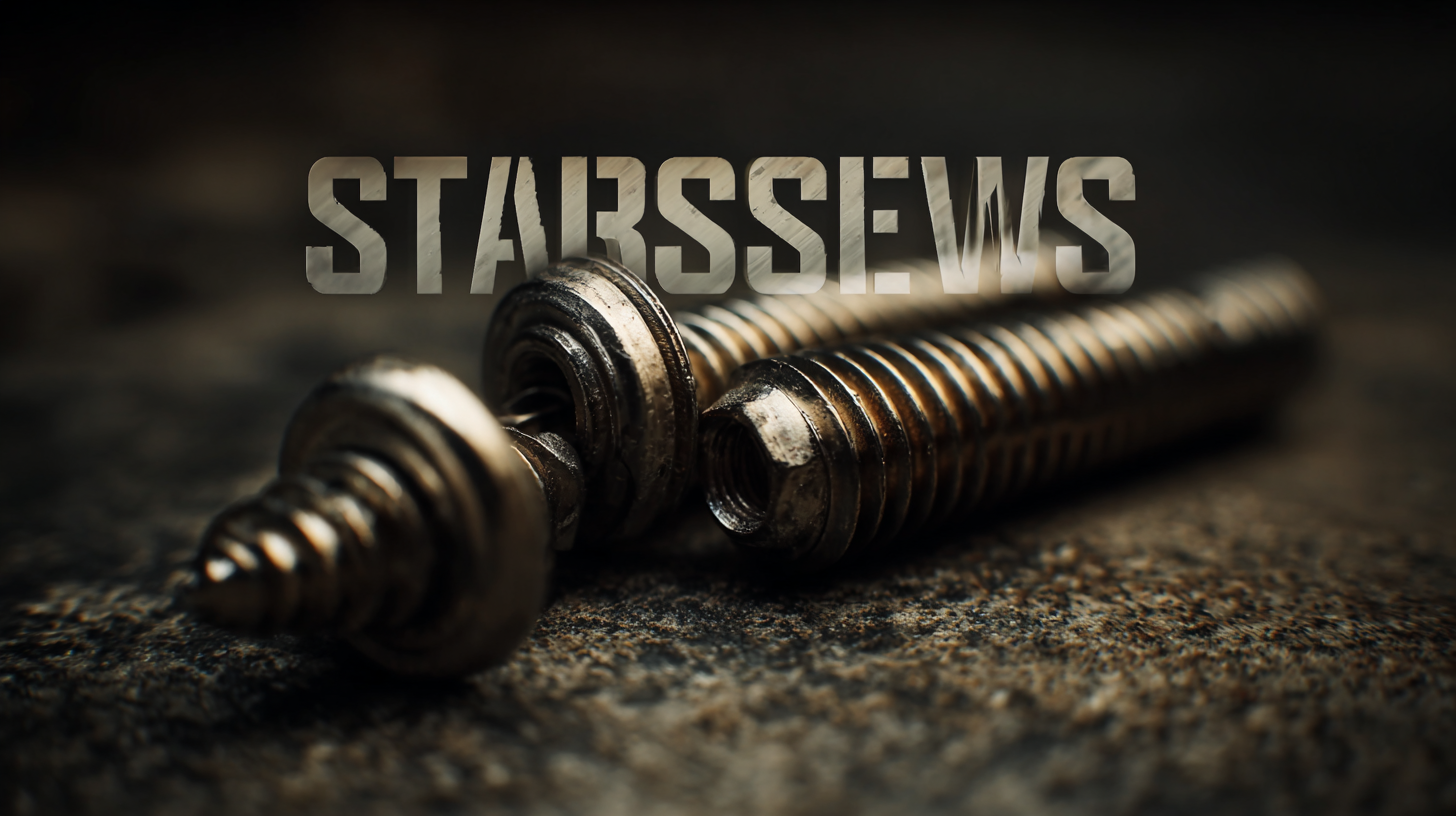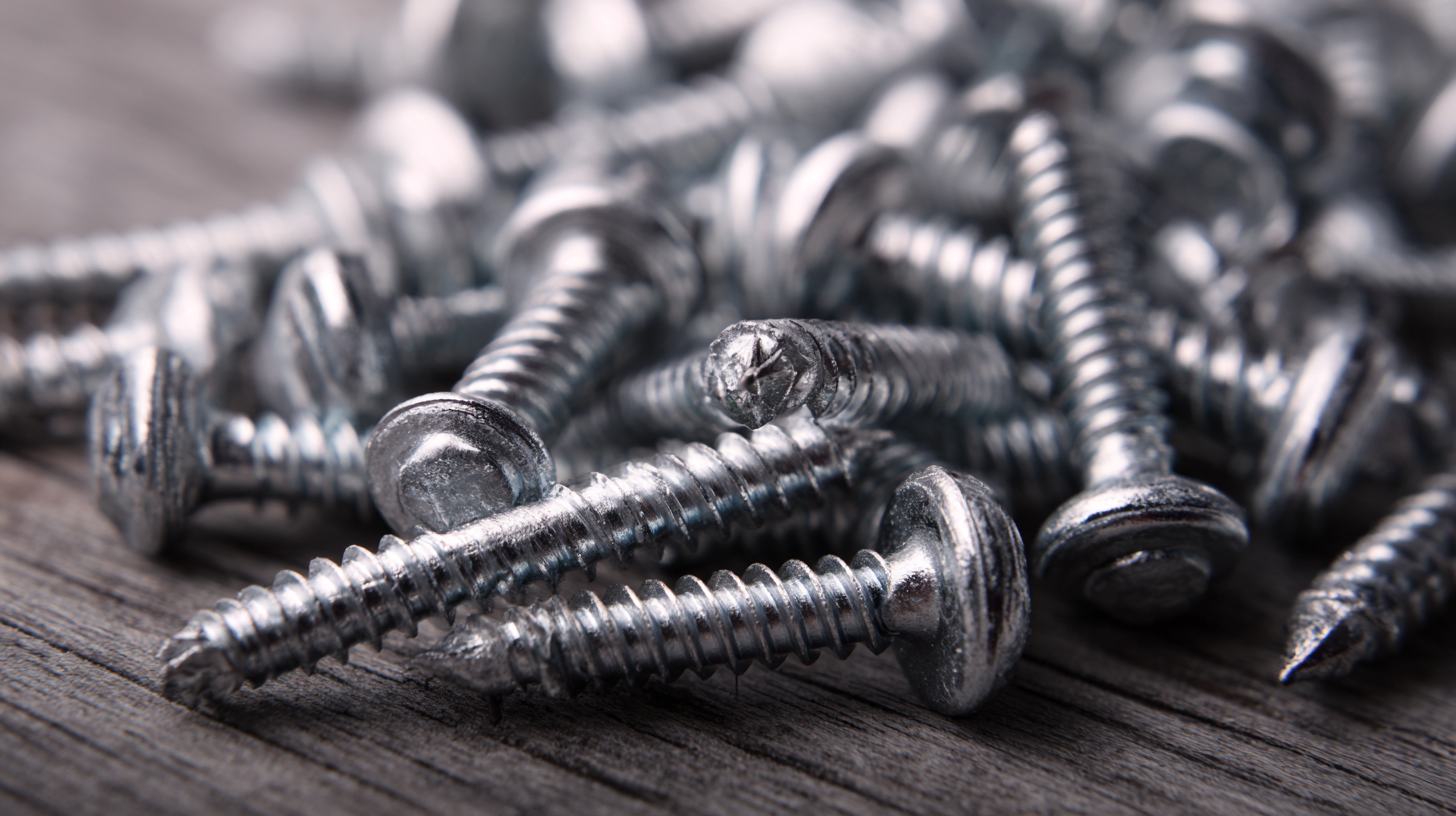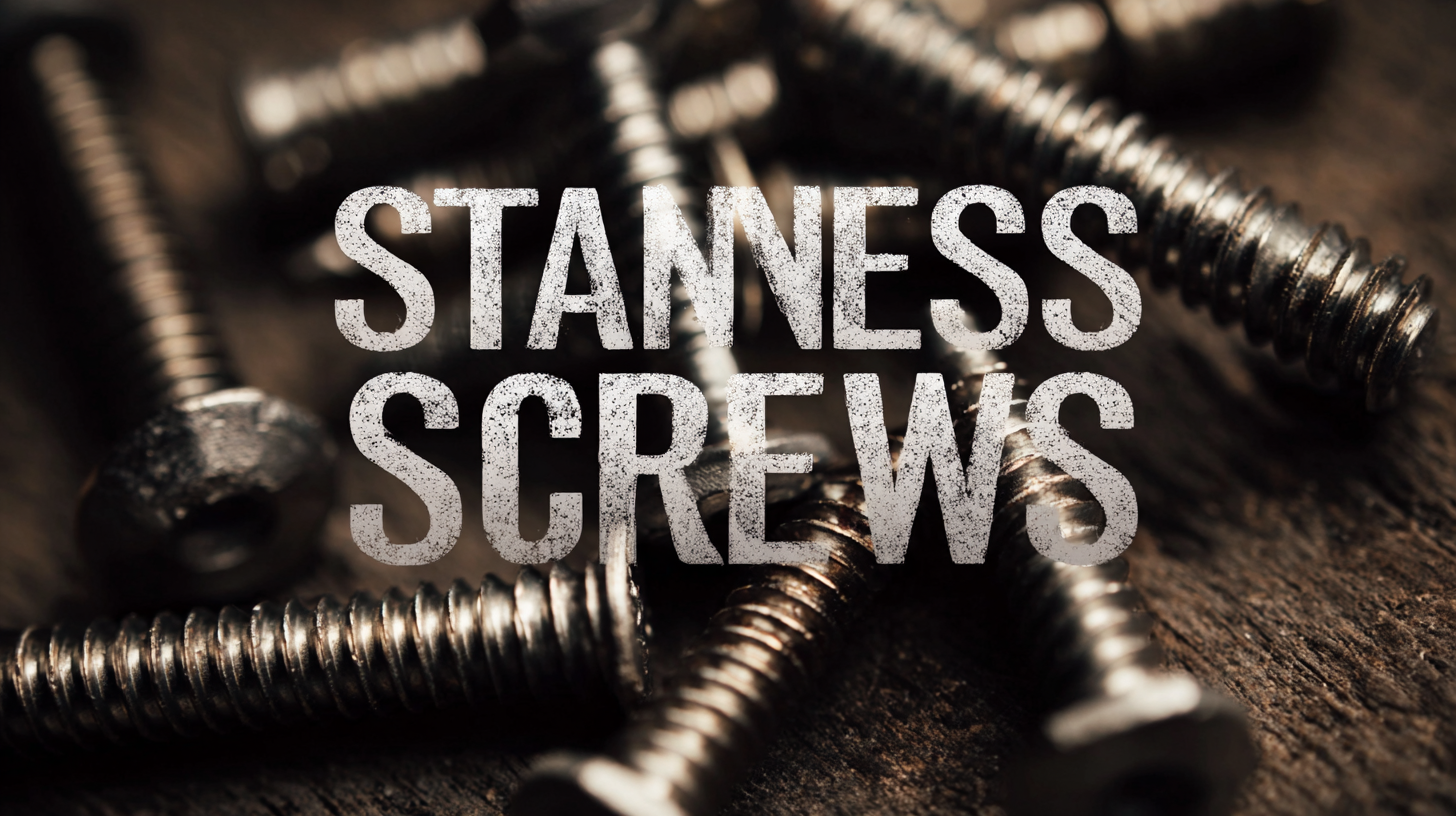
How to Choose the Best Stainless Steel Screws for Your Projects
When embarking on any construction or DIY project, choosing the right hardware is crucial for ensuring durability and effectiveness, and stainless steel screws stand out as a preferred option among professionals and enthusiasts alike. These versatile fasteners are renowned for their resistance to corrosion, making them ideal for both indoor and outdoor applications. However, with a plethora of options available, selecting the best stainless steel screws can be a daunting task. In this blog, we will explore various factors to consider, such as the specific project requirements, screw grades, and finishes, helping you make an informed decision. Whether you are constructing a deck, assembling furniture, or tackling repairs, understanding how to choose the right stainless steel screws can significantly impact the longevity and success of your projects.

Understanding Stainless Steel Screw Grades and Their Applications
When selecting stainless steel screws for your projects, understanding the different grades and their applications is crucial. Stainless steel screws are categorized primarily into grades 304 and 316, each offering unique properties tailored for specific environments. For instance, while grade 304 is ideal for general applications due to its excellent corrosion resistance, grade 316 is preferred in marine and coastal applications because of its superior resistance to saltwater and harsh chemicals.
As the U.S. industrial fasteners market is anticipated to reach USD 16.75 billion in 2022 and grow at a CAGR of 2.9% from 2023 to 2030, the demand for quality fasteners continues to rise. This growth highlights the importance of selecting the right materials for durability and performance.
**Tip 1:** Always consider the environment in which the screws will be used; for outdoor or corrosive environments, opting for higher-grade stainless steel can save future costs on repairs or replacements.
**Tip 2:** Consult recent industry reports and product showcases; trade shows reveal cutting-edge advancements in screw technology, enabling you to make informed choices about the most suitable products for your needs.
Stainless Steel Screw Grades and Applications
Key Technical Specifications to Consider When Choosing Screws
When it comes to selecting the best stainless steel screws for various projects, understanding key technical specifications is crucial. First and foremost, you should pay attention to the screw's grade. Stainless steel screws typically come in grades 304 and 316, with 316 offering enhanced corrosion resistance, making it ideal for marine or exterior applications. Additionally, consider the finish of the screws. Options like passivated or polished finishes not only improve aesthetics but also offer extra protection against rust and wear.
Another important specification is the screw size, which affects both performance and compatibility with materials. Always ensure that the length and diameter of the screw match your project requirements. Furthermore, the thread type and pitch are essential – finer threads provide better grip in soft materials, while coarse threads are superior for harder materials.
**Tips**: When in doubt about screw selection, consult a project-specific guide to verify that the chosen screws will withstand environmental factors. Always keep a variety of screws on hand to tackle unexpected changes during the project, ensuring you have the right fasteners for any need. And remember to match the screw with the right washer type to enhance stability and prevent loosening over time.
Selecting the Right Size and Length for Optimal Performance
When selecting stainless steel screws for your projects, choosing the right size and length is crucial for ensuring optimal performance. According to a recent industry report, approximately 70% of fastening failures can be attributed to improper screw sizing, leading to increased project costs and time delays. Therefore, taking the time to assess the specific requirements of your application is vital.

One important tip is to always consider the material thickness you are working with. For instance, a general rule of thumb is to use screws that penetrate at least 1.5 times the thickness of the material for a secure hold. Additionally, check the screw's grip length, which should match the combined thickness of all components being fastened. This will help distribute the load evenly, reducing stress and potential failure points.
Furthermore, pay attention to the driving method and the type of threads. Choosing screws with coarse threads can improve grip in softer materials, while fine threads are better suited for harder substances. A study in the Journal of Materials Science found that mismatch in thread types can reduce joint strength by over 30%. Always make sure to match the screw to the specific materials and conditions of your project for the best results.
Differences Between Common Stainless Steel Alloys and Their Uses
When selecting the best stainless steel screws for your projects, understanding the differences between common stainless steel alloys is essential. Stainless steel is classified into various grades, each with unique properties and applications. For instance, 304 stainless steel is known for its excellent corrosion resistance and is widely used in food processing and kitchen applications. On the other hand, the more corrosion-resistant 316 stainless steel, which contains molybdenum, is ideal for marine environments and chemical processing where exposure to harsh substances is common.
One key consideration is the environment in which the screws will be used. If you're working in highly corrosive environments, consider alloys with superior resistance to crevice corrosion, such as the HP-13Cr stainless steel. Recent studies have highlighted the importance of alloy composition in combating corrosion, especially in applications exposed to aggressive conditions like CO2 and H2S.
**Tips:** Choose the right grade based on your specific application. For general use, 304 may suffice, but for enhanced durability in challenging environments, opt for 316. Additionally, always verify the mechanical performance and compatibility of the alloy with your project requirements to ensure longevity and reliability.
How to Choose the Best Stainless Steel Screws for Your Projects - Differences Between Common Stainless Steel Alloys and Their Uses
| Alloy Type | Corrosion Resistance | Strength | Common Uses |
|---|---|---|---|
| 304 | Good | Moderate | Kitchen appliances, food processing equipment |
| 316 | Excellent | Moderate | Marine environments, chemical handling |
| 410 | Fair | High | Cutlery, industrial applications |
| 2205 | Very Good | High | Oil and gas, piping systems |
| A2 | Good | Moderate | General-purpose fasteners |
Tips for Purchasing High-Quality Stainless Steel Screws Online
When purchasing high-quality stainless steel screws online, it's essential to focus on several key factors to ensure you select the right product for your projects. First, consider the type of stainless steel used in the screws. Austenitic stainless steel (like 304 or 316) is commonly preferred due to its corrosion resistance and durability, making it suitable for both indoor and outdoor uses. Always check the specifications provided by the manufacturer to confirm the alloy used.

Next, pay attention to the screw's coating and finish. Some screws come with additional coatings that enhance their corrosion resistance further. For example, screws coated with a layer of ceramic or nylon can offer better protection against rust in harsh environments. Additionally, look for reputable suppliers with high-quality product images and detailed descriptions. Reading customer reviews can provide insight into the screws' performance in real-life applications, helping you make informed choices before finalizing your purchase.
